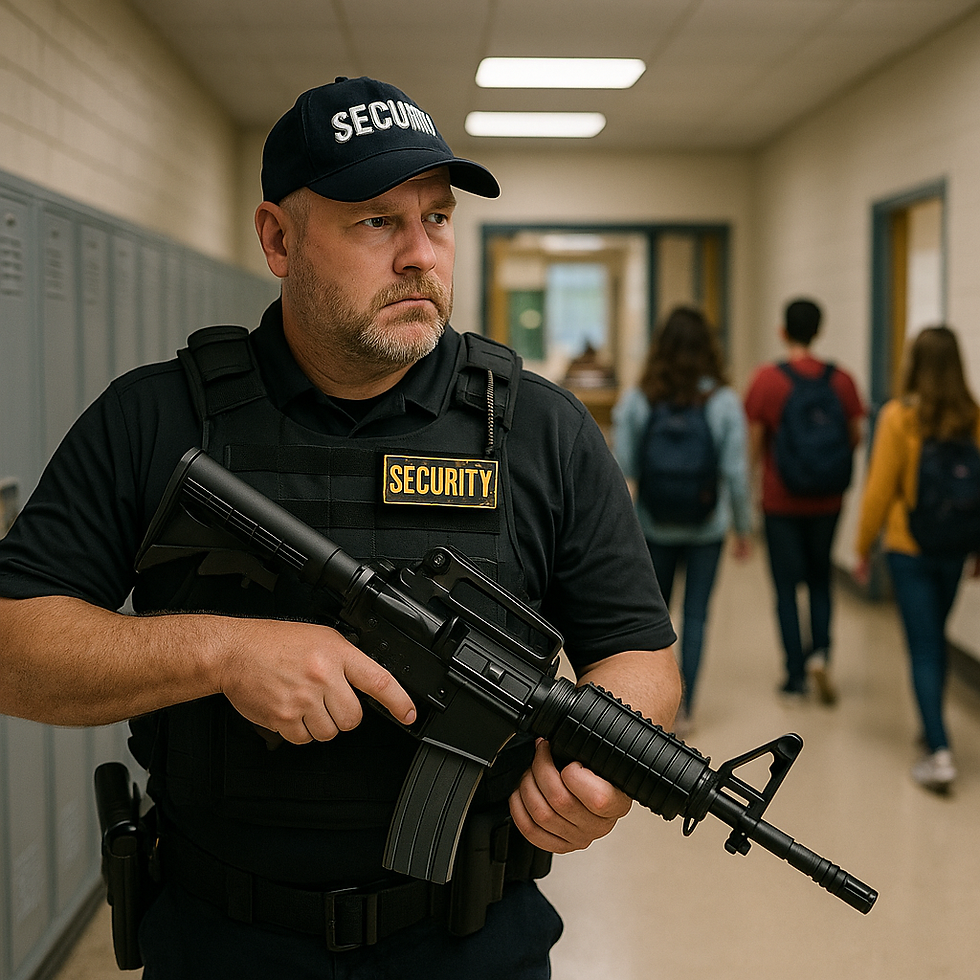Do Armed Guards Prevent School Shootings
- CrisisWire

- Sep 29
- 2 min read
Each new school shooting reignites the debate: Should armed guards be placed on campus to protect students? Proponents argue visible force deters violence. Critics warn it creates a false sense of security and escalates risks.
The reality is complex. While armed guards may stop some attacks, research shows they do not eliminate the threat — and without integrated safety planning, schools remain vulnerable.
The Problem: A Divided Debate
Parents demand visible security after tragedies.
Administrators fear liability if they do nothing.
Data shows mixed results on effectiveness.
Policy often outpaces strategy, leaving schools reactive rather than proactive.
This uncertainty forces leaders into difficult choices.
Evidence and Case Studies
Virginia Tech (2007): Despite campus police presence, the shooter killed 32 people. Response was fast, but prevention failed.
Sandy Hook (2012): Armed security was not present; attacker killed 26. Debate afterward pushed many states to add armed guards.
Parkland, Florida (2018): An armed school resource officer was on site but failed to engage the shooter, leading to 17 deaths. The case highlighted training and response, not just presence, as critical.
RAND Corporation (2021 Review): Studies found no conclusive evidence that armed guards reduce casualties in school shootings. In some cases, shootings still occurred despite on-site law enforcement.
For further review of evolving models, see SchoolSafety.gov Threat Assessment Resources.

Actionable Fixes Beyond Armed Guards
Threat Assessment Teams Proactively identify and manage at-risk students. See The Threat Assessment Handbook for structured approaches.
Layered Access Control Locked doors, visitor management, and controlled entry points reduce exposure. Locked Down explains why.
Mass Notification Systems Rapid alerts save lives during crises. Mass Notification Failures on Campus explores why systems often fail and how to improve them.
Drills and Crisis Leadership Armed guards alone cannot compensate for untested emergency plans. The Prepared Leader shows how leaders must own preparedness.
Leadership Responsibility
The presence of an armed guard is not a substitute for leadership accountability. Research shows prevention depends on integrated safety strategies: behavioral threat assessments, access control, and culture of awareness.
Universities, K–12 schools, and boards must avoid the illusion of security and instead adopt layered, tested systems.
For practical playbooks on campus security, see:
Contact CrisisWire at crisiswire@proton.me for campus threat assessments, security audits, and continuity planning.
Follow CrisisWire:
👉 More insights on the CrisisWire Blog





Comments